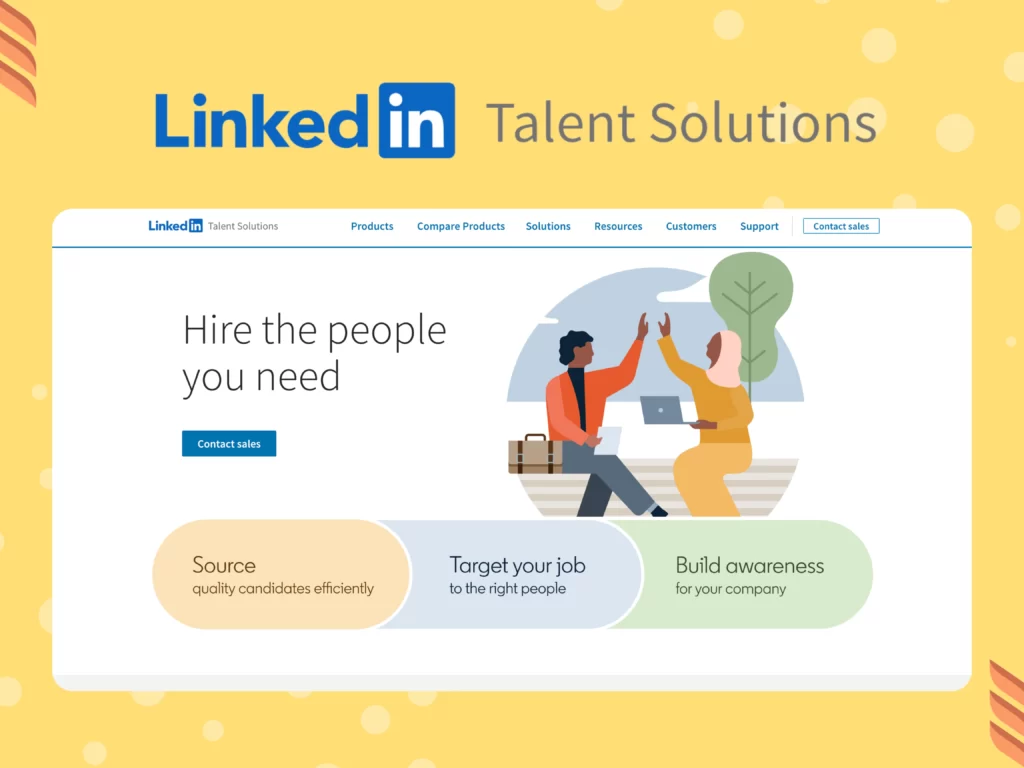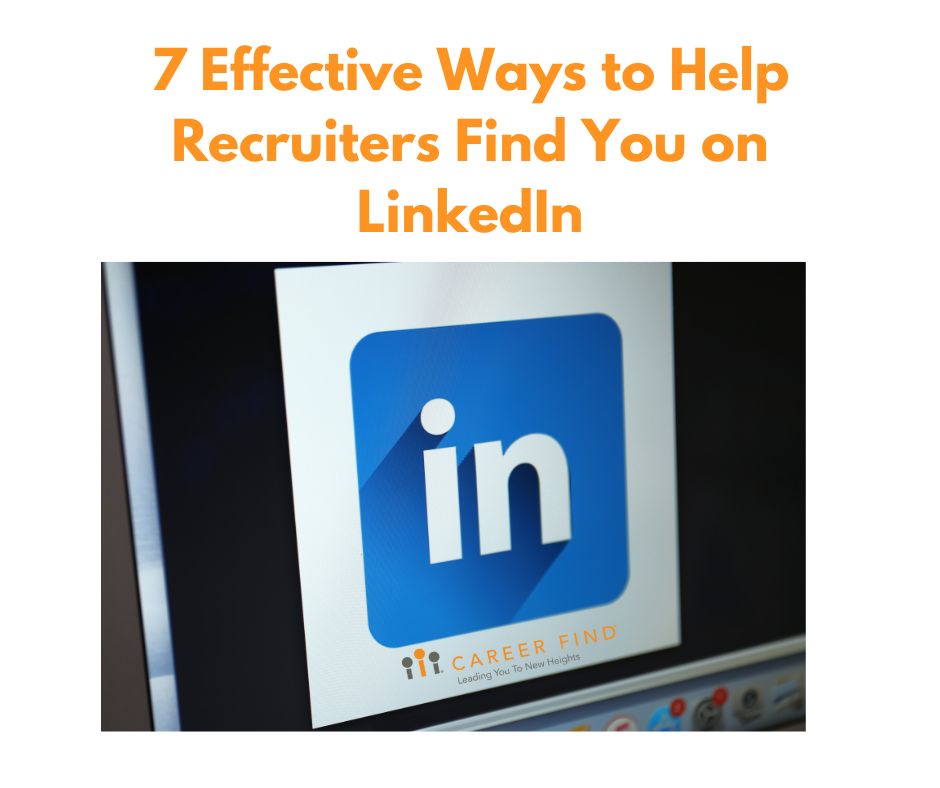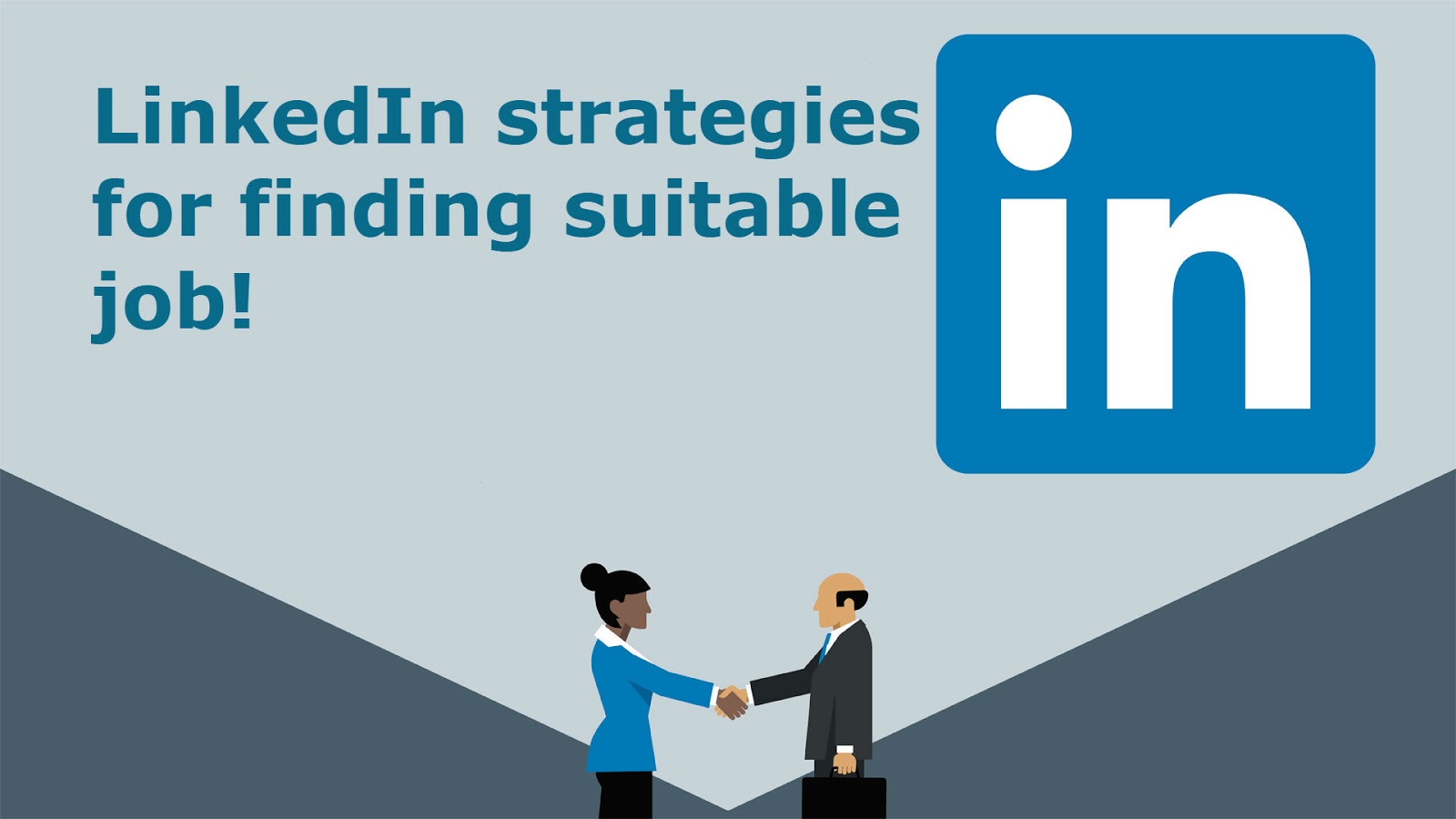In today’s job market, having the right connections can make all the difference. One of the most effective ways to enhance your job search is by partnering with a headhunter. With the vast professional network of LinkedIn at your fingertips, finding a headhunter who aligns with your career goals has never been easier. In this post, we’ll explore how to identify the right headhunter on LinkedIn and understand their valuable role in your job search journey.
Understanding the Role of a Headhunter

Before diving into how to find a headhunter, let’s clarify what a headhunter actually does. Headhunters, also known as recruiters, are professionals hired by companies to find suitable candidates for open positions. Here’s a breakdown of their key functions:
- Talent Sourcing: They actively search for candidates who meet the specific requirements of a job opening, often reaching out to people who may not even be seeking new opportunities.
- Screening Candidates: Headhunters thoroughly vet candidates, conducting interviews and assessments to ensure they fit the job profile and company culture.
- Negotiation: They often serve as intermediaries in the negotiation process, helping to align expectations between the candidate and the employer regarding salary and benefits.
- Market Insight: Headhunters have a deep understanding of industry trends, which can provide valuable insights to both candidates and companies.
Now, you might wonder why you would want to work with a headhunter instead of applying directly to job postings. Here are a few reasons that highlight their advantages:
- Access to Hidden Job Markets: Many positions aren’t advertised publicly. Headhunters have access to a network of opportunities that aren’t listed on job boards.
- Expert Guidance: They can offer personalized advice on how to improve your resume, highlight your strengths, and prepare for interviews, making you a more competitive candidate.
- Time Savings: Instead of sifting through countless job descriptions, a headhunter can quickly connect you with suitable openings tailored to your skills and preferences.
But, remember, not all headhunters are created equal. Here are some factors to consider when choosing one:
| Factor | Why It Matters |
|---|---|
| Industry Specialization | Look for a headhunter who specializes in your industry for better alignment with job opportunities. |
| Reputation | Research their track record; positive reviews and testimonials can indicate their effectiveness. |
| Personal Connection | Choose someone you feel comfortable with and who understands your career goals. |
In summary, a headhunter can significantly enhance your job search by providing access to hidden opportunities and expert guidance. By understanding their role and knowing how to choose the right one on LinkedIn, you position yourself optimally for your next career move. Ready to dive in and find the right headhunter for you? Let’s get started!
Also Read This: Indeed vs. LinkedIn: Which Platform Is Better for Job Seekers?
3. Benefits of Using LinkedIn for Job Searching

Alright, let’s dive into why LinkedIn is such a powerhouse when it comes to job searching. If you’re not leveraging this platform, you might be missing out on a treasure trove of opportunities. Here are some key benefits:
- Networking Opportunities: LinkedIn is essentially a professional social network where you can connect with industry professionals, recruiters, and even potential employers. These connections can lead to job referrals and insider information about job openings.
- Access to Headhunters: Many headhunters and recruiters actively use LinkedIn to scout talent. They often post job vacancies and actively search for candidates based on their profiles, making it easier for you to get noticed for your dream job.
- Personal Branding: Your LinkedIn profile allows you to showcase your skills, achievements, and professional history in a way that a traditional resume does not. By effectively crafting your profile, you can enhance your personal brand and stand out from the competition.
- Targeted Job Search: LinkedIn’s job search feature lets you filter job listings based on various criteria such as location, industry, and experience level. This means you can spend less time sifting through irrelevant postings and focus on the roles that truly match your skills.
- Professional Development: LinkedIn offers a wealth of resources, including articles, courses, and webinars that can help you improve your skills or stay updated on industry trends. By engaging with this content, you not only enhance your expertise but also show potential employers your commitment to ongoing professional development.
- Direct Communication: Unlike traditional job boards, LinkedIn allows you to directly message recruiters and connections. This can lead to more personalized interactions, which can be a significant advantage in the hiring process.
So, whether you’re actively seeking a new job or just exploring potential career advancements, leveraging LinkedIn can make a substantial difference. It's not just a platform for resumes; it’s a vibrant ecosystem of career opportunities waiting to be tapped into!
Also Read This: Can I Include Hyperlinks and Photos in LinkedIn Posts
4. Steps to Find a Headhunter on LinkedIn

Now that you’re on board with the benefits of LinkedIn, you might be wondering how to actually find a headhunter who can help you in your job search. Here’s a step-by-step guide to get you started:
- Optimize Your Profile: Before you start reaching out to headhunters, make sure your LinkedIn profile is up-to-date and professional. Include a clear profile picture, a compelling headline, and a detailed summary of your experience and skills. Highlight your achievements, and don’t forget to incorporate keywords relevant to your industry.
- Utilize the Search Function: Use LinkedIn’s search bar to look for headhunters. You can type in keywords such as “headhunter,” “recruiter,” or even specific job titles you are interested in. Don’t hesitate to include your industry to narrow down the search results.
- Filter Your Results: Once you have your search results, use LinkedIn’s filtering options. You can filter by location, company, and even connections to find headhunters who are in your network or live in your area. This can make your outreach efforts more effective.
- Check Their Activity: Before reaching out, take a moment to review their profiles. Look for headhunters who specialize in your industry or field. Check whether they post regularly, engage with their network, or come highly recommended. This can give you insights into their expertise and reliability.
- Reach Out Personally: Once you’ve identified potential headhunters, send them a connection request or a message. Introduce yourself, mention your interest in their services, and briefly explain your career aspirations. Keep it professional yet friendly, and make sure to customize each message.
- Follow Up: If you don’t hear back right away, don’t get discouraged. Many headhunters juggle numerous candidates at once. A gentle follow-up after a week or so can keep you on their radar without being too pushy.
By following these steps, you can strategically position yourself to connect with headhunters who can aid you in your job search. It’s about cultivating relationships and showcasing your unique value in a competitive job market!
Also Read This: Should You Message Hiring Managers on LinkedIn? A Comprehensive Guide
5. Optimizing Your LinkedIn Profile for Headhunters
When it comes to attracting headhunters on LinkedIn, your profile is your storefront—it needs to shine! Think of it as your personal marketing piece where you showcase not just your skills, but your personality as well. Here are some actionable tips to make your LinkedIn profile irresistible.
1. Professional Profile Photo: First impressions are everything! Use a high-quality, professional photo where you’re dressed appropriately for your industry. A friendly smile paired with good lighting can go a long way.
2. Compelling Headline: Instead of the default job title, craft a headline that reflects your career goals and key skills. Use keywords that align with the types of roles you’re interested in. For example, instead of "Sales Manager," try "Results-Driven Sales Manager Specializing in B2B Solutions." This makes it easier for headhunters to find you!
3. Engaging Summary: Your summary is your elevator pitch! Write in the first person and highlight your career achievements, values, and what you’re looking for in your next role. Keep it concise, yet informative. Sell yourself with authenticity!
4. Showcase Your Experience: When listing your job experiences, focus on achievements rather than just duties. Use bullet points to make it easy to read. Numbers, percentages, and results can significantly boost your appeal!
5. Skills and Endorsements: Make sure to add relevant skills to your profile. Aim for at least 5-10 primary skills that are critical in your field. Don’t hesitate to ask colleagues or friends for endorsements to back up your claims!
6. Build a Strong Network: Connect with industry professionals and join relevant groups. Regularly share updates, articles, or insights from your field to increase engagement. A broader network can lead to more visibility!
By taking these steps, you can significantly enhance your LinkedIn profile, making it a powerful tool for attracting headhunters. Treat your profile as an ongoing project, and don’t hesitate to update it regularly to reflect your most current skills and experiences.
Also Read This: Creating a CV from LinkedIn: A Quick and Easy Guide
6. How to Approach a Headhunter on LinkedIn
Now that you’ve polished your LinkedIn profile to perfection, it’s time to reach out to headhunters. But how do you start the conversation? Here’s a simple guide to ensure your approach is both professional and effective.
1. Do Your Research: Before reaching out, take some time to research the headhunter. Look at their profile, see the types of positions they specialize in, and get a feel for their style. This shows that you’re serious and have a genuine interest.
2. Personalize Your Connection Request: Instead of sending a generic connection request, personalize it! Mention mutual connections, specific industries, or even something you found interesting about their profile. A brief, tailored message can make a positive impression.
3. Be Clear and Concise: Once connected, send a follow-up message thanking them for accepting your request. Introduce yourself briefly, stating your current role and what you're looking for. For example:
- Hi [Headhunter's Name],
- I hope this message finds you well! My name is [Your Name], and I'm currently a [Your Position] at [Your Company].
- I'm exploring new opportunities in [Your Field/Industry] and would love to connect for any insights or openings you might have.
4. Engage with Their Content: If the headhunter posts articles or insights, take time to engage with their content. Like, comment, and share your thoughts. Being active on their posts can keep you on their radar.
5. Follow Up: If you don’t hear back after a week or so, it’s perfectly fine to send a gentle follow-up message. Just keep it light and friendly. Something like, “Hi [Headhunter's Name], I wanted to check in and see if you had any thoughts on my previous message!”
Approaching headhunters on LinkedIn doesn’t have to be intimidating. By being genuine and strategic, you can open doors to new opportunities and pave the way for a successful job search. Happy networking!
Also Read This: How to Add CFP Certification to Your LinkedIn Profile
7. Building Relationships with Headhunters
When it comes to finding a headhunter on LinkedIn, it's not just about connecting and sending a message. It’s all about building a genuine relationship. You want to be memorable, and the best way to do this is to engage authentically.
Start by researching the headhunters you want to connect with. Check their profiles for specialties, experience level, and areas of expertise. Understanding their background will help guide your conversation. When you reach out, personalize your message. Instead of a generic "I'd like to connect," try something like:
"Hi [Headhunter's Name], I noticed your work with [specific field or company] and was impressed by your expertise in [specific skill or industry]. I’m currently exploring new opportunities and would love to connect."
After connecting, don’t jump straight into asking for a job. Take the time to engage with their content. Comment on their posts, share relevant articles, and join any discussions they initiate. This helps you stay on their radar and builds rapport. The key is to demonstrate your interest in their work and insights.
Another great way to cultivate these relationships is to attend industry events where they might be present, or participate in webinars they host or attend. If you have an opportunity to follow up after an event or a webinar, take it! It’s a fantastic way to start a conversation and can pave the way for a more significant connection.
Lastly, be sure to show appreciation. If they share useful information or refer you to a job opportunity, send a thank-you message. A little gratitude can go a long way in making you a standout candidate in their eyes. Building a genuine relationship takes time; however, the dividends during your job search can be enormous.
Also Read This: How to Connect with Alumni on LinkedIn: Best Practices for Networking with Graduates
8. Tracking Your Job Search Progress
Once you're on the path to connecting with headhunters on LinkedIn, it's crucial to maintain organization throughout your job search. Tracking your progress not only keeps you accountable but also helps you refine your approach over time.
Start by creating a simple job search spreadsheet. Here’s how to format it:
| Job Title | Company | Date Applied | Status | Headhunter Contacted |
|---|---|---|---|---|
| Marketing Manager | ABC Corp | 01/15/2023 | Interview Scheduled | Yes |
| Product Developer | XYZ Inc | 01/20/2023 | Application Under Review | No |
Here are some key columns to include:
- Job Title: Note the role you're applying for.
- Company: Keep track of where you’ve applied.
- Date Applied: Record when you submitted your application.
- Status: Update this as you hear back (e.g., interview scheduled, rejected, etc.).
- Headhunter Contacted: Indicate if you reached out to a headhunter for the position.
Alongside your spreadsheet, set aside time each week to review your progress. Reflect on what’s been working and where you might need to pivot. Are you getting more responses from certain types of roles or industries? Adjust your focus accordingly.
Tracking your progress also means keeping a record of conversations with headhunters. Take notes on what they suggested, any feedback they provided, and follow-up tasks you need to complete. This will ensure you stand out in their memory and help guide your next steps.
In summary, tracking your job search progress is just as important as your initial outreach. It helps you stay organized, recognize trends, and ultimately increases your chances of landing your dream job. Happy hunting!
Conclusion
In today's competitive job market, leveraging platforms like LinkedIn to connect with a headhunter can be a game-changer in your job search. By following the strategies outlined, you can:
- Expand Your Network: Engage with industry professionals to grow your connections.
- Enhance Your Profile: Optimize your LinkedIn profile to attract headhunters.
- Stay Informed: Follow industry trends and insights shared by recruiters to better align your job search.
Additionally, don’t hesitate to reach out directly to headhunters or recruitment firms that specialize in your field; a personal touch can go a long way. Remember, the right headhunter not only helps find opportunities but also provides valuable career guidance based on their insider knowledge of the industry.
By taking these proactive steps, you position yourself more strategically, increasing your chances of landing your desired role. Embrace the power of LinkedIn in your job search and bolster your chances of success by connecting with professionals who can open doors for you.
 admin
admin








